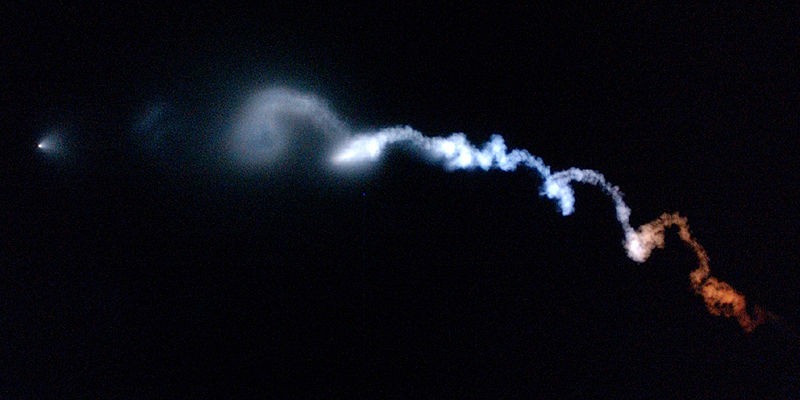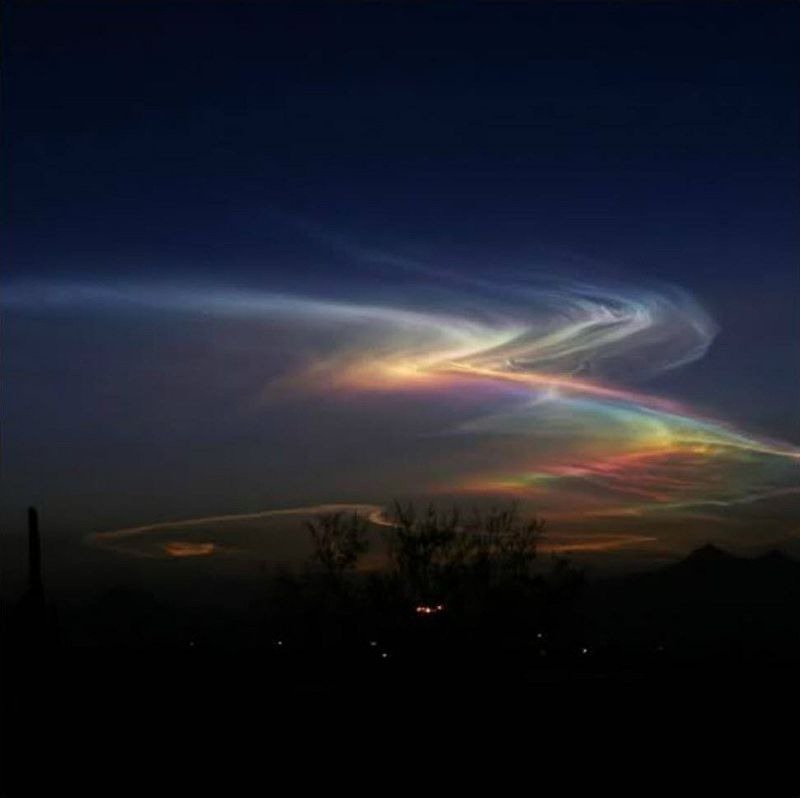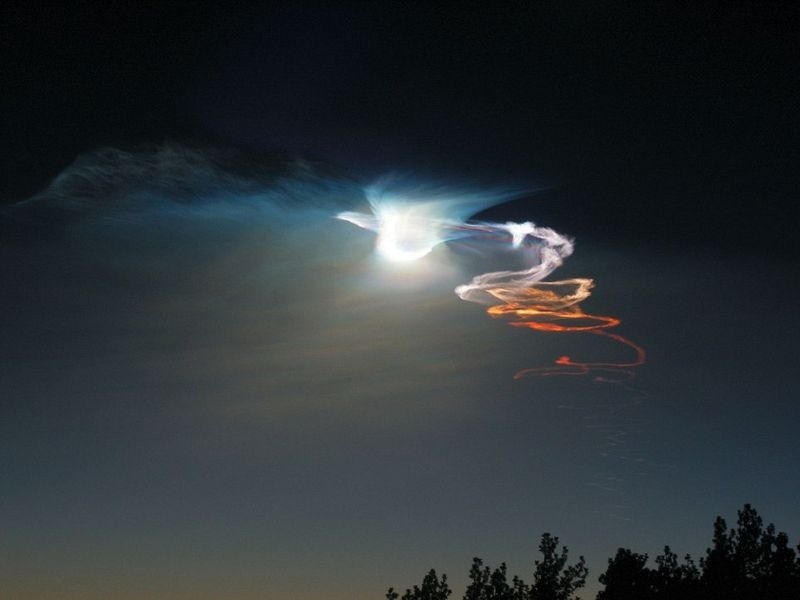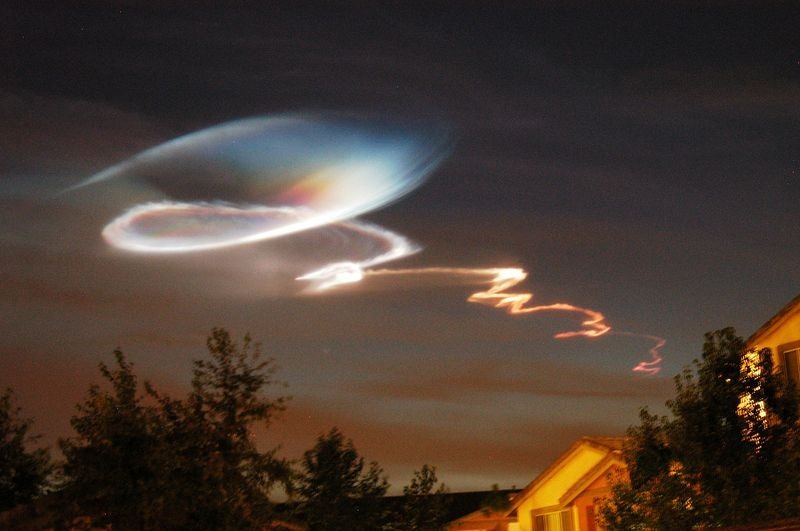
On December 9, 2009, a curious spiral of blue and white light appeared in the night sky over northern Norway and Sweden, freaking out a section of the public and generating an intense debate among astronomers and scientists as well as conspiracy theorists. Hundreds of people called the Norwegian Meteorological Institute to ask what it was. Everything from anomalous Northern lights, to aliens and trans-dimensional wormhole was suggested. Some even linked the event to the high-energy experiments that was going on at that time at the Large Hadron Collider in Switzerland. The light was seen from all across northern Norway as well as from northern Sweden, and was reported to have lasted for 10 minutes.

Unlike many alleged UFO sightings that goes unexplained, the mystery of the Norwegian spiral was solved in just 26 hours after the aerial display. The spiraling blue light was caused by a failed test firing of a Russian Bulava missile.
The Russian Ministry of Defence issued an official statement stating that there was a technical malfunction in the third stage of the Bulava missile, causing the exhaust to come out sideways and sending the missile into a spin.
“Such lights and clouds appear from time to time when a missile fails in the upper layers of the atmosphere and have been reported before ... At least this failed test made some nice fireworks for the Norwegians,” said Russian defence analyst Pavel Felgenhauer.
The Bulava is an intercontinental ballistic missile (ICBM) designed to have a range of 10,000 km, but its repeated failures have been a source of embarrassment for Russia. At least six of 13 previous tests (as of 2009) also ended in failure.

It’s not unusual for rocket launches to leave spectacular light trails over the sky. There is actually a term that describes it. It’s called twilight phenomenon. Quoting from Wikipedia:
Twilight phenomenon is produced when unburned particles of missile or rocket propellant and water left in the vapor trail of a launch vehicle condenses, freezes and then expands in the less dense upper atmosphere. The exhaust plume, which is suspended against a dark sky is then illuminated by reflective high altitude sunlight through dispersion, which produces a spectacular, colorful effect when seen at ground level.
The phenomenon typically occurs with launches that take place either 30 to 60 minutes before sunrise or after sunset when a booster rocket or missile rises out of the darkness and into a sunlit area, relative to an observer's perspective on the ground. Because rocket trails extend high into the stratosphere and mesosphere, they catch high altitude sunlight long after the sun has set on the ground. The small particles in the expanding exhaust plume or "cloud" diffract sunlight and produce the rose, blue, green and orange colors—much like a dispersive prism can be used to break light up into its constituent spectral colors (the colors of the rainbow) -- thereby making the twilight phenomenon all the more spectacular.

The twilight phenomenon can be seen in the wake of a Minotaur I launch vehicle during its departure from Space Launch Complex 8 at Vandenberg AFB, Calif., Sept. 22, 2005. Photo credit: Sgt. LeeAnn Sunn-Wagner/Wikimedia

Photo credit: Hayne Palmour

Photo credit: unknown

Photo credit: unknown

Photo credit: defence.pk

Photo credit: defence.pk
Quelle: AP
